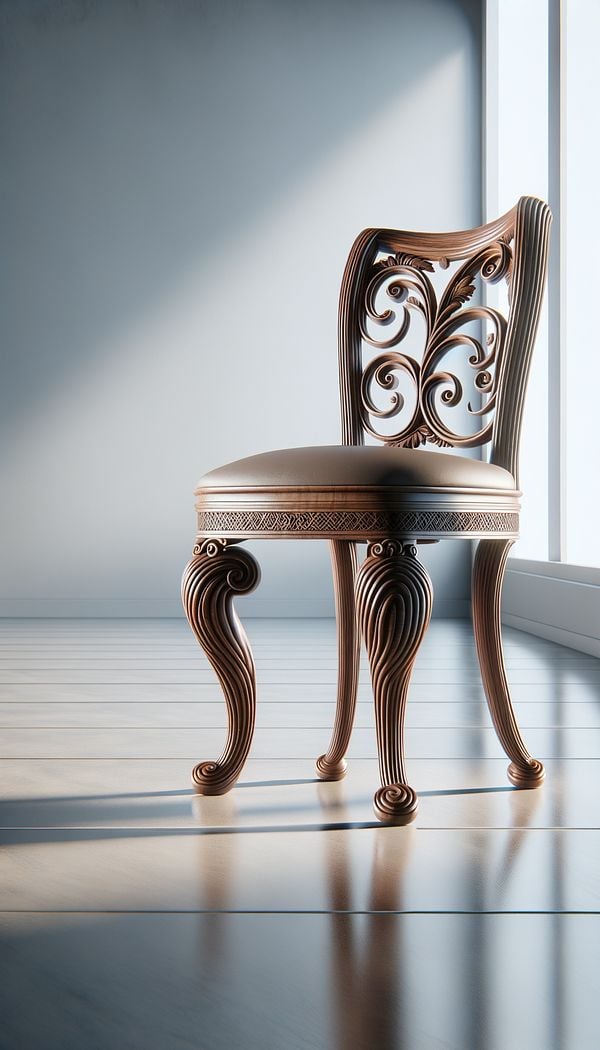What is a Spiral Leg?
A spiral leg is a furniture leg characterized by its twisted or helical shape.
Description
A spiral leg is a distinctive type of furniture leg that features a twist or spiral pattern, creating a helical shape along its length. This design element adds a decorative and often ornate touch to furniture pieces, contributing to their aesthetic appeal and stylistic distinction. The origins of spiral legs can be traced back to ancient civilizations, but they became particularly popular during certain historical periods, such as the Baroque and Rococo eras, when opulence and intricate detailing were celebrated in furniture design.
The creation of spiral legs involves careful craftsmanship and attention to detail, usually requiring the skills of an experienced woodworker. The process often starts with selecting a solid piece of wood that is then meticulously carved, turned, or machined to achieve the desired spiral effect. This technique not only enhances the visual appeal of the furniture but also demonstrates the maker's proficiency in woodworking.
Spiral legs are most commonly found on tables, chairs, and cabinets, adding a touch of elegance and sophistication to these pieces. Depending on the design, the spirals can range from subtle twists to elaborate, tightly wound spirals. The choice of design and the intricacy of the spiral pattern can significantly influence the overall style and value of the furniture piece.
Usage
Spiral legs are often featured in pieces of furniture that aim to convey a sense of elegance and refinement. For example, a grand dining table with spiral legs can serve as the centerpiece of a formal dining room, adding a notable element of sophistication to the space. Similarly, a coffee table or a writing desk with intricately carved spiral legs can elevate the aesthetic of a living room or home office, creating a focal point that draws attention and admiration.
FAQs
-
How are spiral legs made?
Spiral legs are crafted through a meticulous process involving carving, turning, or machining a solid piece of wood into the desired helical shape. This requires skilled craftsmanship and attention to detail to achieve the intricate spiral effect.
-
Can spiral legs be found on modern furniture?
Yes, while spiral legs are often associated with historical periods like the Baroque and Rococo eras, they can also be found on contemporary furniture designs. Modern interpretations of spiral legs may feature less ornate designs and incorporate modern materials, offering a fresh take on this traditional element.
-
Are spiral legs only used for decorative purposes?
While spiral legs primarily serve a decorative role, enhancing the aesthetic appeal of the furniture, they also contribute to the structural integrity of the piece. The careful crafting ensures that the legs are sturdy and capable of supporting the furniture's weight.
Practical Application
When integrating furniture with spiral legs into your interior design, consider the overall style and theme of the room. Spiral legs often convey a sense of luxury and refinement, making them a great choice for classical, traditional, or eclectic interiors. However, with careful selection, they can also complement modern spaces. To achieve a balanced look, pair these pieces with other decorative elements that echo the ornate or sophisticated nature of spiral legs, such as intricate wall treatments or luxurious textiles.
-
Furniture Types599 articles
-
Decorative Techniques322 articles
-
Historical Periods & Movements150 articles
-
Fabrication & Craftsmanship133 articles
-
BombeBombe refers to a type of furniture with a bulging or outward curved shape.
-
Floor LampA floor lamp is a tall, freestanding lighting fixture designed to stand on the floor.
-
ChandelierA chandelier is a decorative ceiling-mounted light fixture.
-
MoldingMolding is the use of decorative strips to enhance architectural features and spaces.
-
Colour TemperatureColour temperature is a characteristic of visible light that has important applications in lighting, photography, videography, publishing, manufacturing, astrophysics, horticulture, and art.
